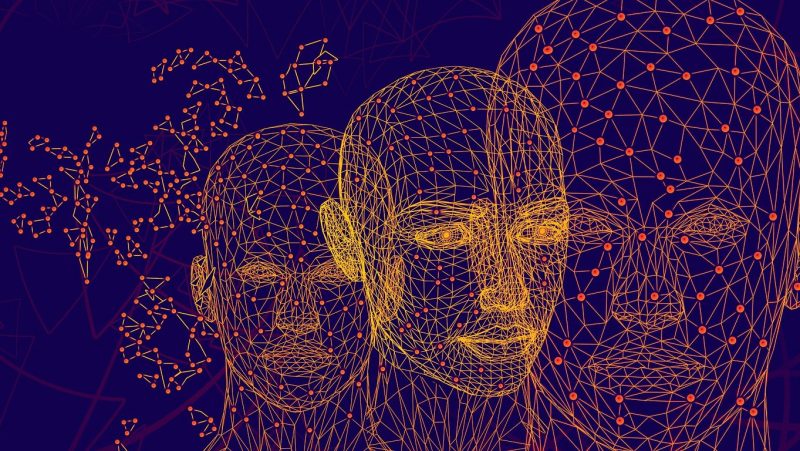45 Worldwide Mental Health Statistics to Blow Your Mind

Sadly, worldwide mental health statistics show that the prevalence of mental illnesses has increased significantly over the past decade. One of the reasons for the rise in the number of mental health issues is the stigma and lack of awareness and support surrounding mental health problems.
With more and more people battling symptoms and signs of mental issues, and coronavirus wreaking havoc, it is essential that you know all the facts about these conditions so you could better help yourself and your loved ones.
Top 10 Worldwide Mental Health Statistics for 2022
- Over 970 million people in the world are affected by a mental disorder.
- The DSM-5 lists over 200 forms of mental illnesses.
- Approximately 1 in 5 US adults suffers from mental disorders.
- 34% of Gen Z's stated their mental health got worse during the pandemic.
- 48 million Americans have some type of anxiety disorder.
- 10.8% of Americans with mental illnesses don't have any health insurance.
- 1 in 6 children in the USA has been diagnosed with a mental issue.
- 6 million adults in the United States experience panic disorder.
- LGBT adults are more at risk of mental health disorders, given that 86% were bullied in school.
- Only 2% of the overall budget goes for mental health treatment.
Mental Health Statistics Worldwide
They show us devastating numbers. What’s more, it seems that the global pandemic will make things even worse, according to new studies.
1. Over 970 million people in the world are affected by a mental health or substance use disorder.
(SingleCare)
Mental health issues are one of the leading causes of disability across the globe, whereas they are the number one reason for disability in the United States of America. What is more, we still don’t know how the COVID-19 pandemic will affect the final worldwide mental health statistics.
2. Approximately 1 in 5 US adults suffers from mental disorders.
(NAMI)
That amounts to 51.5 million or roughly 20% of adults in America that have experienced mental health problems.
5.2% of the population have dealt with a serious mental illness in 2019. Mental illness disorders account for one out of every eight visits to the emergency room, which is about 12 million visits.
3. With 16%, New Jersey, Hawaii, and Texas are the states with the lowest mental illness prevalence, mental illness statistics indicate.
(State of Reform)
On the other hand, 25% of Idaho residents have problems with mental health, making it the number one state with the highest rates of mental disorder prevalence.
The second place belongs to the citizens of Oregon (23.6%), while the third runner-up is Utah (23.5%), lagging behind Oregon by only 0.1%
4. Coronavirus and mental health stats: 33% of Americans reported the highest levels of anxiety and stress compared to the rest of the world.
(Statista)
33% of Americans are finding it hard to deal with depression, stress, and anxiety during the coronavirus outbreak, compared to 26% of Brits, and 26% of Canadians that reported the same mental health issues. Norwegians, with 10%, ranked the last in this top ten list.
5. Mental health statistics by gender confirm that women are two times more likely to suffer from depression.
(Statista) (World Economic Forum)
What is more, 24.5% of women suffer from some form of mental disorder, compared to 16% of men. While more research is needed on the subject, the main culprits for this situation might be domestic violence, income and socio-economic and inequality, unequal social status, schedule of responsibilities, and the expected emotional support.
6. About 9% of people suffer from eating disorders, based on the most recent global mental health statistics.
(ANAD)
28.8 million Americans are estimated to have an eating disorder at one point in their lives. Hence it is no wonder that at least one person dies as a direct result of an eating disorder every 52 minutes.
7. There is a new phobia in development—coronaphobia.
(Medscape) (The Japan Times)
Seeing how quarantine has already left a great impact on the way people behave (social distancing, avoiding crowds, etc.), it’s no surprise that a new phobia emerged in 2020. The symptoms of coronaphobia include panic, anxiety, depression, paranoia, and obsessive behavior. People with a history of mental health issues are more likely to develop coronaphobia.
Mental Health in America Statistics
Before the 20th century, many mental illnesses used to be misdiagnosed as hysteria, psychosis, or demonic possession. That said, there are many forms of mental disorders that are recognized as such and most of them have successful forms of treatment.
8. 6 million adults in the United States experience panic disorder.
(ADAA) (SingleCare)
That’s 2.7% of the overall population. People suffering from panic disorder experience unexpected and intense fear often followed by heart palpitations, shortness of breath, dizziness, and stomach and chest pain.
9. How many mental illnesses are there? The DSM-5 lists over 200 forms of mental illnesses.
(Mental Health America)
The Diagnostic and Statistical Manual of Mental Disorders, published by the American Psychiatric Association and used to diagnose mental health issues, identifies a list of more than 200 types of mental illnesses.
10. 2.8% of Americans have bipolar disorder.
(Healthline)
Bipolar disorder is a mood disorder characterized by depression and manic episodes, and it is on the top of the list of mental disorders. It is a serious condition among women and men, in which 83% of cases are classified as severe.
11. Mental illness statistics for the USA in 2020 report 48 million Americans had some type of anxiety disorder.
(NAMI) (APA)
19.1% of adult Americans have anxiety disorders, such as panic disorders, social anxiety disorders, general anxiety disorders or specific phobias.
12. 15 million American adults experience social anxiety disorder (SAD).
(ADAA) (SingleCare)
Social anxiety disorder is characterized by an intense fear from social interaction and it affects 6.8% of the adult population, as statistics on mental health reveal. The disorder usually develops when the person is about 13 years old.
13. Around 50% of people with PD (panic disorder) have the condition before the age of 25.
(Verywell Mind)
Panic disorder usually develops in young adulthood. PD is also twice as common among women than in men.
14. 7.8% (19.4 million Americans) experience a major depressive episode (MDE).
(SAMHSA)
The numbers are even higher among adolescents. In other words, it’s estimated that 3.8 million teenagers (between 12 and 17 years old) suffer from MED.
15. 6.8 million Americans have a generalized anxiety disorder (GAD), as indicated by mental health statistics for 2020.
(SingleCare)
3.1% of US adults suffering from this type of mental problem display chronic worry and anxiety about their daily lives on most days for at least six months.
16. 8 million adults in America suffered from posttraumatic stress disorder (PTSD).
(SingleCare) (Statista)
Posttraumatic stress disorder, or PTSD, is a serious condition that occurs after someone has experienced or witnessed a traumatic event. Victims of sexual assault are 49% more likely to develop PTSD than those who have witnessed natural disasters. On top of that, 82.8% of US veterans reported suffering from this disorder.
17. Mental health statistics estimate 36%–50% of bulimia nervosa patients also suffer from a major depressive disorder.
(Toledo Center for Eating Disorders) (Center for Discovery)
The most common co-occurring mental health disorders that accompany anorexia are depression, OCD, BPD, and alcohol or substance use disorder.
18. Anorexia and bulimia are the two most prevalent eating disorders.
(ANAD)
It is estimated that almost 2% of American women suffer from bulimia and 0.9% have had anorexia at some point in their lives.
19. There are 9.5 million adults struggling with both substance use disorder and a mental illness.
(SAMHSA)
Adolescent mental health statistics suggest those with a history of depression were more prone to use drugs, alcohol, and cigarettes.
20. 1.2% of the US population has schizophrenia.
(SingleCare)
1.5 million people in America suffer from this disorder. This condition is a chronic mental disease that influences how a person feels and behaves. Even though rare, it can have a disabling effect on a person’s daily life.
Youth & College Mental Health Statistics
How is age connected with mental health disorders and what about the prevalence of mental illnesses among young people? How many suffer from some type of mental illness? Here’s what the numbers tell us.
21. 5% of students have tried to end their lives since the pandemic.
(Medscape)
The pandemic put even more pressure on already stressed college students. In other words, 25% knew someone who had suicidal thoughts while 5% tried to end their lives
22. CDC mental health statistics reveal 1 in 6 children in the USA has been diagnosed with a mental issue.
(CDC)
Almost 18% of children aged 2–8 suffer from a mental, behavioral or developmental disorder. However, these numbers are most likely to change, given that children’s mental health entered a dangerous zone on account of the global pandemic.
23. Younger people showed higher levels of depression and anxiety due to coronavirus, in comparison with older adults.
(CBS News) (Futurity)
In accordance with teen mental health statistics, although older adults have a higher risk of getting infected with COVID-19, the numbers show us that younger people had more difficulties in coping with the “new normal“. In fact, compared to 13% of seniors, 25% of adolescents reported having severe problems with their mental health.
24. 9.7% of teens suffer from severe major depression.
(Mental Health America)
According to teen mental health statistics, the numbers are even higher (12.4%) among mixed races. In addition to that, while the depression rates are constantly growing among all races, there was a big jump in numbers among African American teens that showed the highest average rates of anxiety and depression, followed by Native Americans that had the highest suicide rates.
25. Mental disorders among college students are on the rise.
(Best Colleges) (Statista)
As a matter of fact, college student mental health statistics show us that about 60% of college students struggle with anxiety, while 40% report severe depression. In terms of diagnoses, 27% of students are clinically diagnosed with an anxiety disorder and 24% are diagnosed with depression.
26. Anxiety, loneliness, and depression were the top concerns of college students amidst the pandemic.
(Inside Higher Ed)
44% of students found these three to be the most challenging obstacles to overcome, while 71% believed that online classes will have negative effects on their learning capabilities. These statistics also show that 13% of students think coronavirus will postpone their graduation.
Prevalence of Mental Health Disorders: Who Is Most at Risk?
While anyone can be diagnosed with some form of psychiatric disorder, some factors can increase the risk of developing a serious mental problem. Let’s see what the numbers tell us.
27. 34% of Gen Z’s stated their mental health got worse during the pandemic.
(American Psychological Association)
21% of people born in the mid-1960s to late 1970s (Gen X) have taken second place on this infamous list, while the third place (19%) belongs to Millenials (born in the early 1980s to mid-1990s). Moreover, research on how many people suffer from depression report that 61% of Americans believe they didn’t get the needed emotional support during the global pandemic.
28. Mental health statistics by state are very grim for Utah as 6% of the citizens reported having suicidal thoughts.
(State of Reform) (KSLTV)
This is the highest in the country. Colorado is close behind with 5.4% while Texas is the lowest at 3.7%. Furthermore, suicide numbers indicate that this is the 10th leading cause of death in America for all ages and genders.
29. Idaho has the biggest percentage of adults with a mental health disorder — 25%.
(State of Reform)
Oregon and Utah come second and third with 23.6% and 23.5%, respectively. Conversely, the states with the best rates of mental health are New Jersey, Hawaii, and Texas.
30. LGBT mental health statistics indicate LGBT adults are over two times more at risk of mental health disorders, given that 86% were bullied in school.
(NAMI)
LGBT people are more likely to consider taking their own lives or hurting themselves than heterosexual adults. In fact, high school students who identify as gay are four times more likely to attempt suicide than their heterosexual classmates.
31. Mental health facts regarding gender observe women are more likely to experience mental problems as 24% of females reported issues compared to 6% of men.
(Statista)
The prevalence is also higher among younger people aged 18-25. 29.4% of them experienced mental health illness. Next in line are 26 to 49-year-olds with 25%. Finally, “only” 14% of the oldest group (over 50 years old) reported issues.
The prevalence of serious mental conditions is 5.7% for women and only 3% for men.
32. According to one study, 66.5% of transgender teens suffer from depression.
(U.S. News)
Furthermore, transgender mental health statistics show that as many as 70% of affirmed males (born female, identified as male) have had suicidal thoughts at one point in their lives. The same goes for the self-injury rates, with 56% affirmed males hurting themselves as opposed to 25.5% affirmed females.
33. 20.5% of the homeless are affected by serious mental health disorders.
(NAMI) (White House)
That’s 111,122 people with mental health disorders wandering around, living in the streets or shelters.
34. Mental health in prisons statistics demonstrate there are ten times more prisoners dealing with mental issues than such patients in mental health institutions.
(School of Public Health)
Even worse, over 356,000 inmates with mental health disorders are not receiving the right treatment. The most common illnesses include depression, bipolar disorder, and schizophrenia.
Coronavirus has made a heavy impact on the prisons and jails too, as the rates are higher in these facilities than in the state they are in.
35. Over 1.7 million veterans receive treatment for mental health issues, veterans mental health statistics indicate.
(VA) (VA)
Suicide and depression show high prevalence rates among veterans. Suicide rates are 1.5 times higher for veterans, compared to non-veterans.
36. Unemployed people are more at risk of developing a substance use disorder.
(Forbes)
Just for comparison, 10%% of people without jobs have SUD, while only 3% of full-time employees suffer from the same or similar kind of mental problems.
37. Coronavirus mental health stats disclose worrying information: 62% of Americans diagnosed with anorexia reported their symptoms got much worse.
(NPR)
COVID-19 had a massive impact on people with eating disorders. The hunt for groceries, quarantine, and lockdowns left an immense impact. On top of that, the National Eating Disorders Association got between 79% and 80% more calls to their hotline owing to the pandemic.
38. Statistics on depression report construction workers show the highest depression rates.
(NAMI) (Personnel Today)
97% of construction workers feel stressed due to bad conditions on the construction sites (no hot water, no toilet facilities), lack of HR support, and long working hours. Consequently, 26% have had suicidal thoughts. Basically, one in four construction workers has thought about committing suicide.
Mental Illness Statistics on Different Treatments
How many people get the proper help?
39. 10.8% of Americans with mental illnesses don’t have any health insurance.
(Mental Health America)
If we do the math, that’s 5.1 million people that can’t use the benefits of the healthcare system. Regarding the states, New Jersey has the lowest rates (2.5%), while Wyoming has the highest rates of uninsured people (23%), as shown in mental health statistics by state.
40. 70% of countries switched to telemedicine and teletherapy due to the global pandemic.
(WHO)
While the health system in OVER 80% OF high-income countries had no problem adapting to the new normal, things don’t look bright in low-income countries. In fact, less than 50% managed to incorporate telemedicine and teletherapy into their health system.
Overall, the coronavirus pandemic caused a disruption or stopped the regular treatment in 93% of countries across the globe.
41. The second most prevalent active ingredient of cannabis, CBD, can help with depression.
(Health Central)
Depression statistics and worldwide mental health statistics could be improved with a little bit of cannabis, whether it’s in the edible or vape form. CBD is shown to react positively with serotonin receptors in the brain. Serotonin regulates your emotional well-being and gives a sense of happiness, thus battling the onset of depression.
42. 43.8% of adults suffering from a mental disorder underwent treatment.
(NAMI)
This number is higher for adults with a serious mental condition— 65.5%. Unfortunately, the delay between the beginning of the disorder and the treatment is an astounding eleven years!
43. Mental health statistics for the US estimate there are 15,961 substance abuse treatment facilities in the whole country.
(Statista) (Statista)
743,828 patients receive treatment for drug addiction in the said facilities, while 702,914 undergo therapy for substance abuse and mental health disorders.
44. 49% of cannabidiol users take it to deal with anxiety and stress.
(Verywell Health) (Statista)
64% of CBD users report that they found CBD to be beneficial particularly in reducing pain, as well as symptoms of anxiety disorders and depression.
45. Only 2% of the global budget goes for mental health treatment.
(World Economic Forum)
What’s more, while $1 trillion is spent each year on depression and anxiety, it’s estimated that the treatment of mental health disorders will cost $16 trillion by 2030.
The Bottom Line
Unfortunately, worldwide mental health statistics show alarmingly high rates and prevalence of mental health disorders. In fact, what this data implies is that anyone could experience the symptoms of a mental illness at some point in their lives.
Knowing that you are not alone in your struggles can be of immense help when it comes to seeking treatment and help. Moreover, these stats and facts can serve to raise awareness of the impact mental health issues have and help reduce some of the stigma attached to these conditions.
FAQs
What are the top 3 mental illnesses?
The three most common mental disorders are:
- Anxiety disorders (that include GAD, OCD, PTSD, and panic disorder)
- Mood disorders (that include depression, bipolar disorders, and dysthymia)
- Psychotic disorders (that include schizophrenia, delusional disorder, and schizoaffective disorder)
Now, what do the numbers tell us? A rough estimation shows us about 31% of adult Americans will experience some type of an anxiety disorder during their life.
What percentage of the population has mental health issues?
There are roughly 970 million people in the world that suffer from some form of mental or substance use disorder, which is about 13% of the world population. The most prevalent mental illness is anxiety. About 284 million people worldwide have been diagnosed with this disorder.
In relation to the US, 1 in 5 are struggling with psychiatric disorders. That’s 51.5 million people
Which country has the highest rate of mental health prevalence?
Since the global pandemic outbreak, the US took the leading role with 33% of people reporting having problems with stress, anxiety, and depression. With 7% less, the second place belongs to the UK and Canada that have the same percentage — 26%. France is in third place momentarily in worldwide mental health statistics, with 24% of people experiencing depression, stress, and anxiety due to coronavirus consequences.
Regarding the US states, Idaho, Oregon, and Utah have the highest mental disorder prevalence rates.





